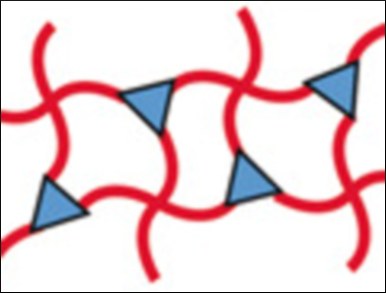Hydrogels are a class of water-swollen cross-linked polymer networks. They have a wide range of biomedical applications, including three-dimensional cell cultures, the controlled release of compounds, and tissue engineering. However, many of these hydrogel platforms are difficult to implement broadly because of challenges associated with their synthesis, formulation, or scalability.
Robert Langer and colleagues, Massachusetts Institute of Technology (MIT), Cambridge, MA, USA, have developed a scalable and user-friendly synthetic hydrogel platform for broad use within the biomaterials field. They designed a water-compatible cross-linking reaction between alkynoates and secondary amines to form β‐aminoacrylate synthetic polyethylene glycol (PEG)-based hydrogels (pictured below, PBS = phosphate-buffered saline).

The precursor chemicals are either available commercially or can be accessed synthetically on a 100-gram scale in a single step. The hydrogel formation occurs at physiologically relevant temperatures upon simple mixing of two aqueous precursor solutions without the need for initiators, catalysts, or specialized laboratory equipment.
The system is tunable, can be readily functionalized, and is compatible with different cell lines. According to the researchers, the hydrogel is a viable platform for three‐dimensional cell cultures, and could also provide a modular chemical platform for use in biomaterials research.
- β-Aminoacrylate Synthetic Hydrogels: Easily Accessible and Operationally Simple Biomaterials Networks,
Owen Fenton, Jason Andresen, Marion Paolini, Robert Langer,
Angew. Chem. Int. Ed. 2018.
https://doi.org/10.1002/anie.201808452




